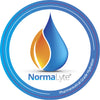Compression Socks for POTS

One of the "fun" symptoms of POTS is blood pooling.
Postural orthostatic tachycardia syndrome (POTS) is a condition that causes an increase in heart rate and blood pressure when standing up. This can lead to symptoms such as dizziness, lightheadedness, fatigue, and nausea.
WHAT IS BLOOD POOLING?
Blood pooling occurs when blood collects in the veins, usually in the legs. Though, sometimes it can happen in your other extremities too, like your hands or arms. With blood pooling, your blood isn't effectively moving through your body. This occurs most commonly in your legs, but can also affect your arms, hands, ankles, or feet.
Signs of blood pooling include:
- Swelling
- Pain
- Heaviness
- Tingling
- Warmth
- Changes in skin color: red, blue, or purple.
COMPRESSION SOCKS FOR BLOOD POOLING
Compression socks can improve symptoms of blood pooling by keeping blood flowing properly from the legs to the heart. This is achieved with the pressure applied to the legs, helping to push blood back up towards the heart.
Postural Orthostatic Tachycardia Syndrome is a dysfunction of a person's autonomic nervous system, meaning that their body is not working properly. When someone with POTS stands up, often their body isn't compensating for the change in position and they will get dizzy. Whereas, a person without POTS, their body compensates and blood travels up to their brain as it should normally.
Blood pooling is one of those lesser discussed symptoms of POTS. Many people with POTS find themselves wearing compression socks through the day to battle symptoms.
TYPES OF COMPRESSION SOCKS
There are a few different types of compression socks available, so it is important to choose the right ones for you. Compression socks are typically measured by mmHg, which refers to the amount of pressure that is applied to the legs. For POTS, it is often recommended to wear compression socks that provide 20-30 mmHg of pressure. Be sure to consult with your physician to determine what is right for you.
It is also important to make sure that the compression socks you choose fit properly. Compression socks should be snug, but not too tight. They should also not restrict your movement.
If you are considering wearing compression socks for POTS, it is important to talk to your doctor first. They can help you to determine if compression socks are right for you and can recommend the right type and size of compression socks for your needs.
BENEFITS OF WEARING COMPRESSION SOCKS FOR POTS:

-
They can reduce swelling in the legs and ankles.
-
They can improve circulation.
-
They can relieve pain and fatigue.
-
They can improve athletic performance.
If you are living with POTS, compression socks can be a helpful tool in managing your symptoms.
CHOOSING THE RIGHT COMPRESSION SOCKS FOR POTS:
- Make sure the socks are made of a breathable material.
- Choose socks that have a comfortable fit.
- Look for socks that are labeled as providing 20-30 mmHg of pressure.
- Start with a lower level of compression and gradually increase the pressure as needed.
- Wear the socks consistently to see the best results.
Here are some common mistakes to avoid when wearing compression socks:
- Wearing socks that are too tight.
- Wearing socks that are too loose.
- Wearing socks that are not the right size.
- Wearing socks that are not made of a breathable material.
- Not wearing the socks consistently.
If you are experiencing any discomfort or pain while wearing compression socks, stop wearing them and talk to your doctor.









Leave a comment